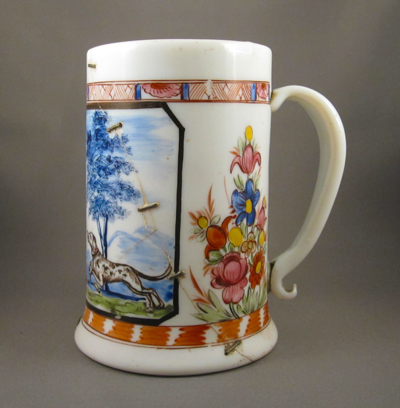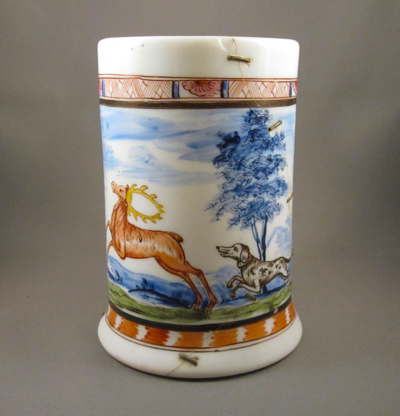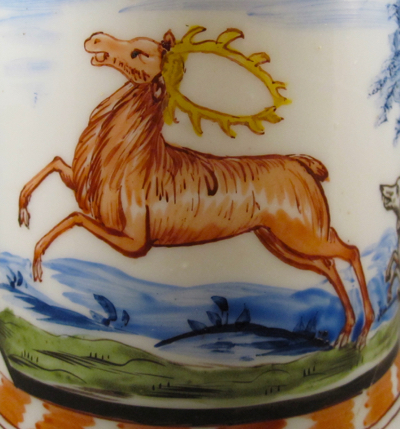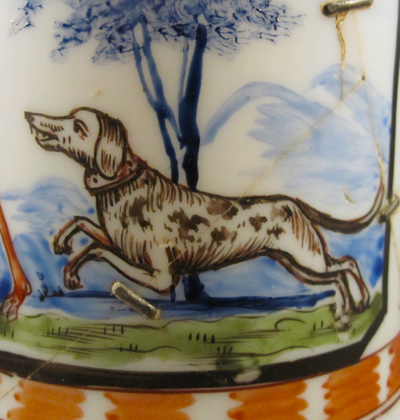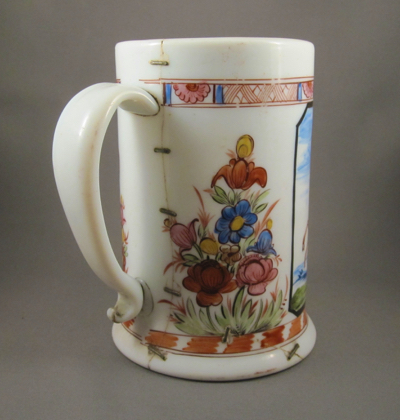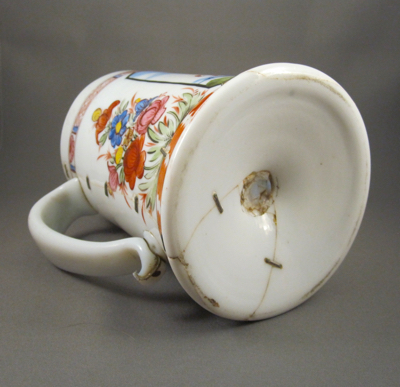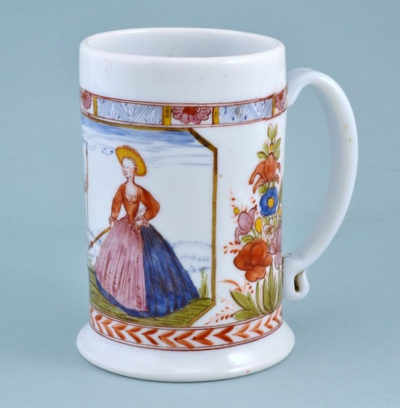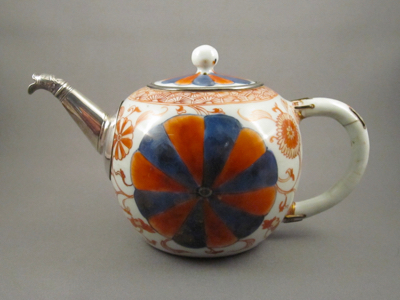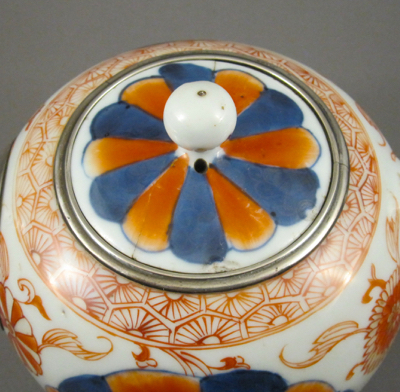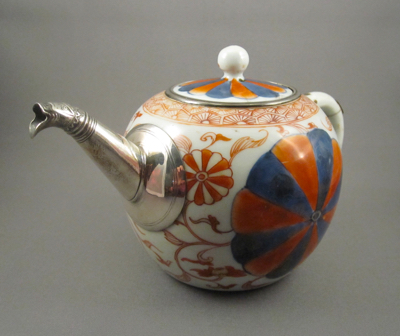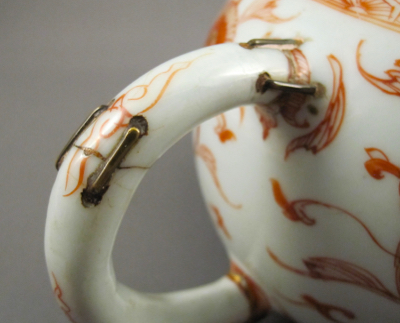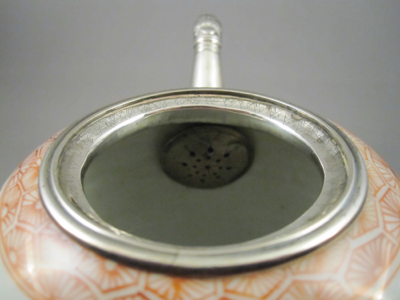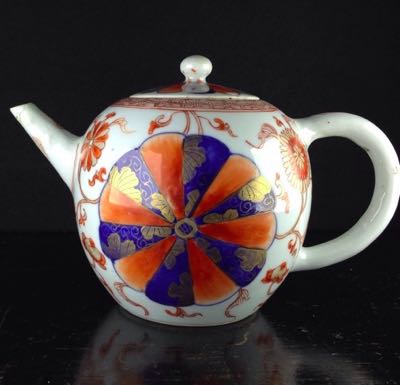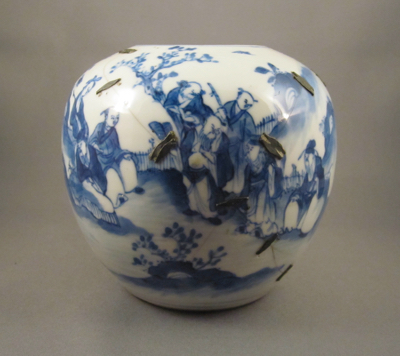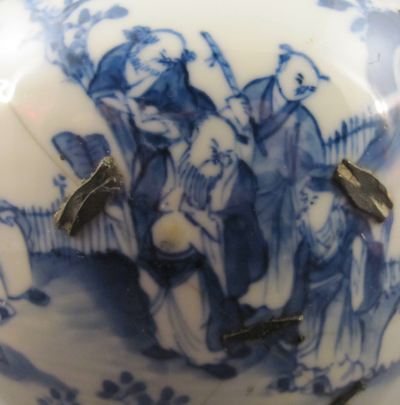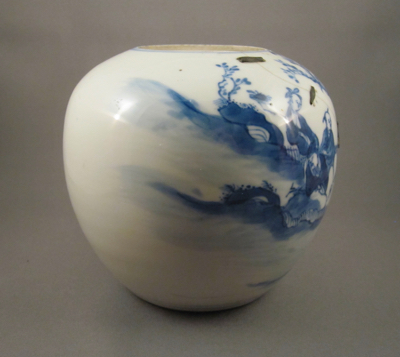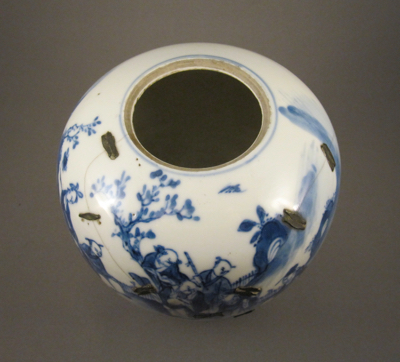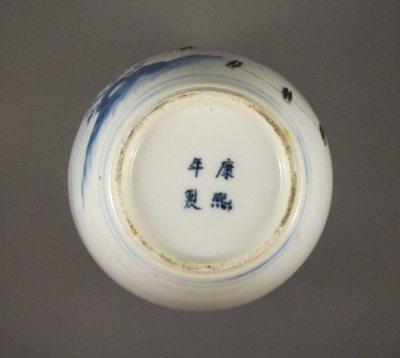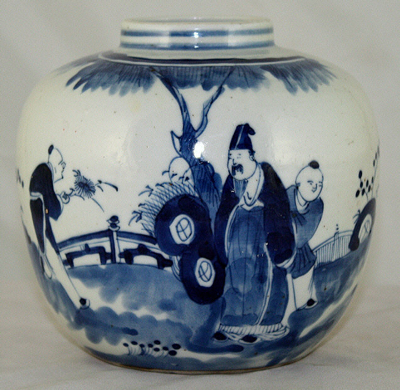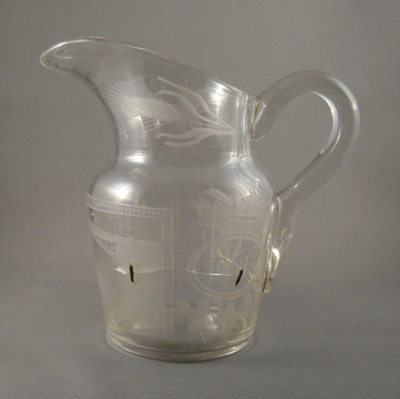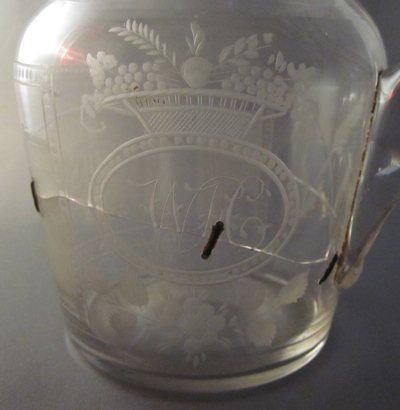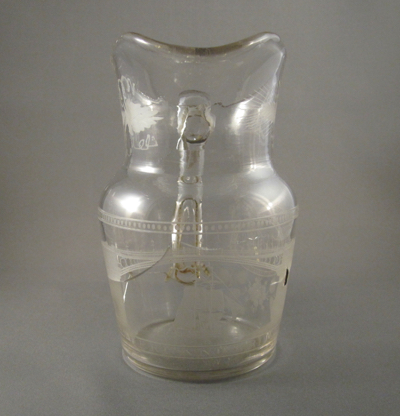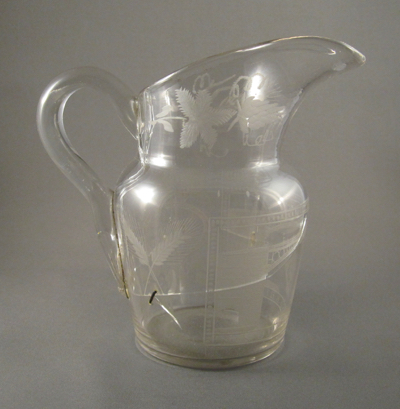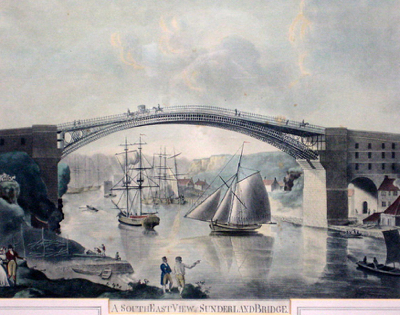This 18th century Milch Glass mug with hand painted polychrome hunting scene of a stage pursued by a dog was made in central Europe in the 18th century and measures 6-1/4″ high.
After this mug was dropped, breaking into two pieces, it was most likely taken to an itinerant china mender who repaired it using 16 metal staples of various sizes. It is more common to find ceramics repaired with staples or rivets, but skilled repairers drilled through glass as well.
“Bohemia was also renowned for ‘milch glass’ or milk glass, and tumblers, mugs, bottles and such things made of it were decorated with Watteau scenes and floral designs. The technique is often good, but the shapes are generally clumsy and the decoration insipid.” From The Glass Collector: A Guide to Old English Glass by MacIver Perciva, 1919.
Here’s another example of Milch Glass with similar form and decoration.
Photo courtesy of Andrew Dando
